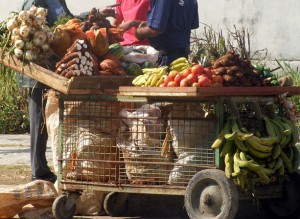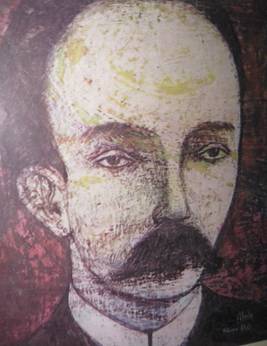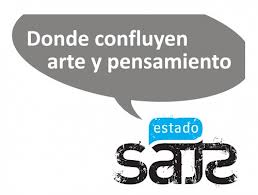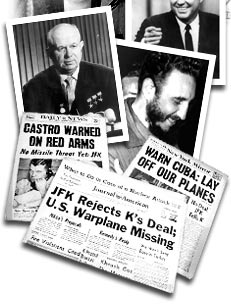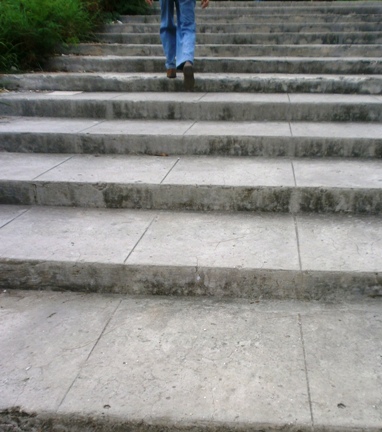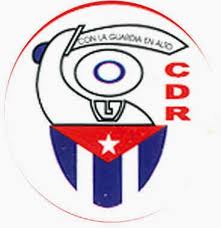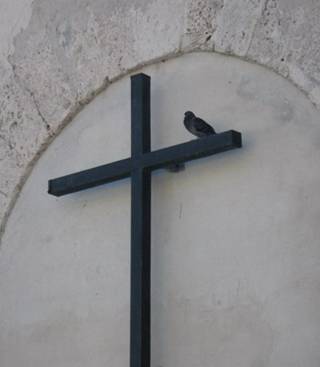 Unfortunately, almost daily, I hear gruesome accounts of personal experiences from family members who attend to and care for the crypts and tombs of their ancestors in the Colon Cemetery. Long ago this burial ground was maintained by ecclesiastical authorities and it must be pointed out that all their attention and organization was evident a thousand times over. After 1959, however, they were summarily relieved of this duty by the new government. That is when things started to deteriorate.
Unfortunately, almost daily, I hear gruesome accounts of personal experiences from family members who attend to and care for the crypts and tombs of their ancestors in the Colon Cemetery. Long ago this burial ground was maintained by ecclesiastical authorities and it must be pointed out that all their attention and organization was evident a thousand times over. After 1959, however, they were summarily relieved of this duty by the new government. That is when things started to deteriorate.
For many years prior to this intervention, its archives were kept in wonderful working order thanks to a gentleman of very advanced age with many years of experience on the job. He assisted all those who went there in search of information with great politeness and efficiency, regardless of how far back the records went. Some years ago I went to request a document on my father, who passed away in 1949, but this gentleman was no longer there. Someone with a very bad attitude waited on me instead and had the nerve to tell me that record books and ledgers were not kept at that time and, therefore,because it had never been registered,she could not look it up. No matter how much I insisted and explained to her that all deaths going back to colonial times had been recorded, she refused to help me.
On another occasion, five years ago on one Mother’s Day, I went to the family crypt to leave flowers and almost fainted when I realized that the large bronze crucifix that had adorned the crypt was gone. Apparently, it had been stolen by force with a hammer and chisel, as a part of it remained embedded in the granite. I reported the robbery and submitted before-and-after photos to the administrator at the time, who became irate and told me very brusquely that, during his time in that position, there had been no robberies. I assured him that the theft had taken place at some time that same week. I have yet to receive any news from the supposed investigation.
Recently, a friend, who is a well-known writer and journalist, expressed to me her consternation at having to go to perform an exhumation of her family’s crypt only to find out that the skeletons of three of her family members were missing their heads. When she went to make a complaint, they had the audacity to tell her that perhaps they had become pulverized over time. Something similar happened to a neighbor of mine, a woman of very advanced age, who told my husband while waiting in line that, when she went to an exhumation to transfer the remains of some family members to an ossuary, she discovered that parts of parts of their skeletons had been stolen. This had caused her to lose sleep.
Another lady also told me about a family member, recently deceased, who a couple of years previously had carried out an exhumation to transfer remains to an ossuary. She had planned on keeping the crypt empty since all of her remaining family in Cuba were quite elderly. You can imagine the shock and confusion she felt when she opened the tomb to find some recently buried remains, none of whom had any relationship to her family.
All this clearly indicates the there is some kind of dark, macabre business going on, with skeletal remains as well as with the crypts. This includes tomb raids to steal clothing and jewelry from those buried during the time of the Republic, and robberies of stone sculptures and bronze ornaments like the large plaque under the relief of Adolfo Luque in the ball players’ crypt. All this has been going on for years, seemingly without the authorities having done anything effective to remedy it.
I personally believe that all these thefts, including large objects such as sculptures, could not have taken place without someone working there having witnessed them, especially since you must present proof of ownership for a tomb or crypt just to remove a simple jardinire in order to send it out for repairs.
As I know from personal experience, if you enter with photographic equipment, a custodian immediately stops you to ask if you are a tourist and if you going to be doing any photography. If so, you are then told you have to pay a fee in CUC. When this happened to me, I insisted that I was going there to take some photos of the family crypt. He finally let me pass, but with a warning that I could only take photos of my family’s property.
If they are so alert that they can spot tourists and charge them an entry fee, then I believe that, when they see someone suspicious opening tombs and carrying off marble statues—all of which must be done with specialized tools and vehicles—this has to be happening with the complicity of “someone on the inside.”
I will never forget the burial of an old friend, whose wake and funeral cortege was postponed far beyond what had been planned because someone from the cemetery directed the funeral home to delay the departure because the covering for the crypt was torn and the administrator, who was the only one who could authorize its replacement, had not yet arrived. Our group waited for more than three hours at the cemetery gate, where this sad affair was becoming extremely unpleasant and chaotic.Finally, my husband—tired of going from the entry gates to the exit, where supposedly some new coverings were located—had to take a worker aside and offer him 20 CUC* to solve the problem.All of a sudden the covering appeared and the burial of our friend went ahead.
All these accounts, which seem to have been taken from a horror or mystery novel, are real. It would be fitting if the authorities responsible for the Colon Cemetery addressed this issue in order to assure eternal rest for our ancestors and to preserve the richness of this sacred ground, which in its 126 years of existence has acquired an abundance of sacred works of art and architecture, spread over 500,000 square meters, and which is considered one of the finest of its kind in the world, and which and has been a designated national monument since 1987.
*Translator’s note: Convertible pesos, pegged to the US dollar. The amount here represents roughly one month’s salary for the average Cuban.
October 7 2012
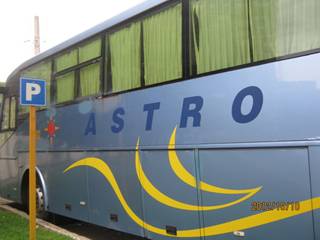 About a month ago, my friend, Mariana, her husband and her mom decided to go on a trip to Trinity through a tourist bus company called Astro. They were very excited about the trip and expected it to go very well since they had paid 132.00 CUP (Cuban pesos) for each person both going and returning. They were anticipating a very comfortable ride with amenities such as air conditioning.
About a month ago, my friend, Mariana, her husband and her mom decided to go on a trip to Trinity through a tourist bus company called Astro. They were very excited about the trip and expected it to go very well since they had paid 132.00 CUP (Cuban pesos) for each person both going and returning. They were anticipating a very comfortable ride with amenities such as air conditioning.

